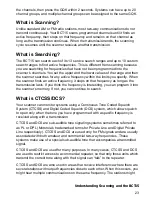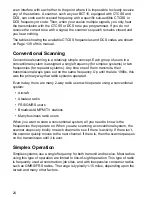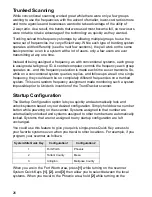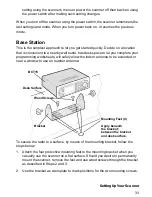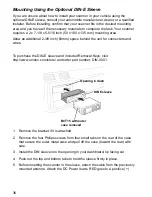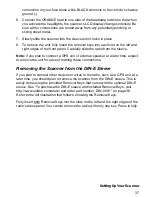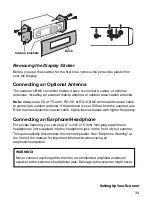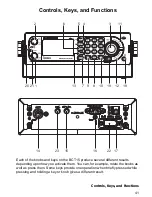
28
The systems in use are:
Motorola Type I
— the radios send the radio ID, the fleet and subfleet talk group
ID to the control channel each time they transmit. To program a Type I system, you
need to know the system’s
fleet map
. The most common fleet maps are included in
the Reference section in this manual. You can also find fleet map resources on the
web at
http://www.radioreference.com
for example.
Motorola Type II
— the radios only send the radio ID and radio channel code to
the control channel. The central computer keeps a database of radio ID’s and
which talk group is assigned to which channel code for each radio, so with this
system the user’s radio sends only about
1
/
3
the data as a Type I system with each
transmission. Type II systems do not use Fleet-subfleet talk groups; instead they
use a 5-digit ID for each talk group.
Type IIi Hybrid
— these systems support a mix of both Type I and Type II users.
Like Type I systems, you must know the system’s fleet map to ensure proper
tracking.
Motorola ASTRO 25 (APCO 25)
— these radios are similar to Type II systems,
but send only the radio ID and radio channel code to the control channel,
transmitting voice in digital form. The BCT15 is not designed to process APCO 25
signals.
EDACS Trunking
EDACS trunking works in much the same way as Motorola trunking with a couple
of major differences. In an EDACS system, each frequency used by the system is
assigned a Logical Channel Number (LCN) so that less data needs to be
transmitted by the control channel. Talk groups are assigned in an
Agency-Fleet-Subfleet (AFS) hierarchy. There is one variation of EDACS called
SCAT (Single Channel Autonomous Trunking) that your BCT15 can monitor.
Logical Channel Numbers
— each frequency used by the system is assigned an
LCN. This information is programmed into each user radio. When a user presses
PTT, their radio sends their AFS information to the control channel. The computer
then assigns that talk group to a channel and sends the LCN so that all other
radios in that talk group will switch to the correct channel. To program an EDACS
system in your scanner, you will need to know both the frequencies used by the
system and the LCN for each frequency.
Agency-Fleet-Subfleet
— talk group ID’s for EDACS systems are assigned in a
way that makes it easy to see at a glance the affiliation of the user. Each radio is
assigned a 2-digit agency identifier from 00 - 15. For example, 01 might be used










